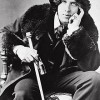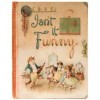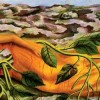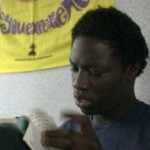Over the last fifty years the study of the past has begun to look at people from groups not previously given much attention by historians, including: • Women’s History • Working people’s History • Black History • Native American History • Non-Christian History • LGBT History This lesson ask learners to consider why the history […]

KS3: History – ‘Hidden Histories’
English Lesson: Coronation Street Stereotypes
Lesson Title: Coronation Street (Stereotypes) Subject:English Overview: Learning objectives Get students to: • give individual responses to a written text (AT 1 and 2) • develop inference and deduction (AT 2) • understand more complex sentences (AT 3) • look at humour in writing (AT 1 and 2) • examine stereotypes (AT 1 and 2) […]

KS3: English – Creating Effects in Poetry through the Use of Irony
This lesson uses the medium of a simple poem which makes ironic references to people’s differences from each other and their differences from norms or stereotypes. Students are invited to read the poem and think about its explicit and implicit meanings and consider irony and its effects. Then they should think about and discuss […]

Wikipedia Timeline of LGBT History
www.en.wikipedia.org/wiki/Timeline_of_LGBT_history This is a timeline of lesbian, gay, bisexual, and transgender (LGBT) related history, starting from around the 10th millennium BC to present day.Contains dates many homophobic laws were made/repealed in various countries. From Key Stage 4 for students to navigate. Bits can be selected for use at lower key stages. Some use for all […]

KS5: Art – ‘Frida Kahlo Self-Portraits’
Frida Kahlo is regarded as one of the most significant artists of the twentieth century. Through the representation of her body she explored aspects of her autobiography, the construction of identity, female experience, gender boundaries and subverted stereotypical representations of women and their bodies in art. This lesson asks the learner to consider her body […]
Recent Videos
Recent Posts
- KS4 English – Shakespeare, Sonnets and Sexuality
 NO OUTSIDERS IN OUR SCHOOLS Teaching the Equality Act in Primary Schools & RECLAIMING RADICAL IDEAS IN SCHOOLS Preparing Young Children for Life in Modern Britain By Andrew Moffat
NO OUTSIDERS IN OUR SCHOOLS Teaching the Equality Act in Primary Schools & RECLAIMING RADICAL IDEAS IN SCHOOLS Preparing Young Children for Life in Modern Britain By Andrew Moffat PSHE – Alphabet Soup
PSHE – Alphabet Soup KS3 – PSHE – Shark Bait
KS3 – PSHE – Shark Bait KS4 – PSHE Omar: Young, Gifted and Gay 2 Part 1
KS4 – PSHE Omar: Young, Gifted and Gay 2 Part 1
Tags
SUBMIT YOUR OWN
COPYRIGHT STATEMENT
If copyright is claimed in any photograph which appears on this website, please contact us and we will happily remove it.
Subscribe / Connect
Subscribe to our e-mail newsletter to receive updates.


